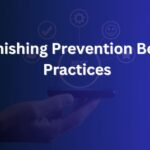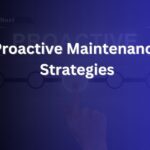Winning quality leads for mobile app development isn’t about one silver-bullet tactic. It’s the compounding effect of positioning, content, outreach, partnerships, and a disciplined sales process—executed consistently. This long-form, step-by-step playbook distills what high-performing studios and solo founders do to attract, qualify, and close buyers in competitive markets. You’ll get concrete frameworks, copy templates, channel strategies, and a 90-day action plan you can implement immediately.
What “Lead Generation” Really Means for App Development Services
In mobile app services, a lead isn’t just a “contact.” It’s a qualified decision-maker with a problem you can solve, a budget window, and a clear next step on your calendar. Effective lead gen fills your pipeline with people who are aligned to your niche, timeline, and price point—not tire-kickers.
Lead Types You’ll See
- Marketing Qualified Leads (MQLs): People who consume your content, download a resource, or attend a webinar. Warm, but not vetted for budget or fit.
- Sales Qualified Leads (SQLs): They’ve passed basic criteria (project scope, timeline, budget range) and have agreed to a discovery call.
- Opportunities: You’ve scoped the problem and proposed a solution with a commercial path (SOW, pilot, or paid discovery).
Key Principle
Quality beats volume. Ten SQLs from your exact ICP (ideal customer profile) will outperform 100 unqualified inquiries. Build every tactic around your ICP and value proposition.
Lay the Foundation: ICP, Positioning, and Offers
Define Your ICP
Choose 1–2 verticals where you have credibility (e.g., healthcare, fintech, logistics, education). Document:
- Company size, team structure (founder-led vs. product-led), funding stage.
- Roles you sell to (founder, CTO, product lead).
- Problems they urgently pay to solve (market validation, HIPAA-compliant MVP, offline-first field ops, payments, analytics).
Craft a Positioning Statement
“ We build HIPAA-ready iOS + Android apps for seed-stage digital health startups that need an FDA-conscious MVP in 12 weeks. ”
Specificity attracts. Generic “we do mobile” repels.
Package Irresistible Offers
- Paid Discovery Sprint (2–3 weeks): UX flows, technical architecture, clickable prototype, backlog, and fixed implementation estimate.
- MVP in 8–12 Weeks: Time-boxed, milestone-driven build with clear scope boundaries.
- App Rescue / Performance Tuning: Audit, profiling, and a 30-day remediation plan.
- Managed Mobile Team: Monthly retainer for continuous delivery and growth.
Make Your Website a Lead Magnet (Not a Brochure)
Home Page Structure That Converts
- Above the fold: clear niche statement + single primary CTA (“Book a 15-minute assessment”).
- Credibility strip: logos, review badges, certifications.
- 3 proof-rich service tiles: MVP, Modernization, Team Augmentation.
- Case studies with outcomes (metrics, timelines, screenshots).
- Social proof: client quotes with full names, roles, and headshots.
- Low-friction lead capture: embedded calendar for discovery calls.
Service Pages That Rank and Sell
Build separate pages per vertical (“Fintech App Development,” “Healthtech MVP”) and per service (“React Native App Rescue”). Each page should cover pains, process, timeline, tech stack, and a mini-FAQ.
SEO Fundamentals
- Keyword focus: “[vertical] app development,” “MVP app developers,” “iOS Android agency [city].”
- Technical hygiene: fast Core Web Vitals, schema markup (Organization, Service, Review), compressed images.
- Internal linking: pillar → cluster architecture to pass authority.
Conversion Optimizations
- Sticky “Book a Call” button on mobile.
- Exit-intent offer (free teardown video of a prospect’s app or concept).
- Chat widget staffed by humans during business hours.
- Calendly/HubSpot Meetings embedded—kill the “contact us” black hole.
Content Engine: Earn Trust at Scale
Topic Clusters That Attract Your ICP
- “How to ship a HIPAA-compliant mobile MVP”
- “Flutter vs React Native for fintech risk controls”
- “Offline-first patterns for field operations apps”
- “App analytics stack: events, cohorts, and LTV for marketplaces”
Publish long-form guides, then slice them into LinkedIn posts, carousels, short videos, and email drips. Every piece should point to a lead capture: discovery sprint, checklist, or webinar.
Case Studies That Sell
Structure each with: situation, constraints, approach, stack, measurable outcomes (e.g., “reduced crash rate from 3.4% to 0.3%,” “time-to-checkout −27%”). Use visuals: before/after screens, architecture diagrams, and charts.
Video + Short-Form Social
Demonstrate credibility with teardown videos, 60-second tip reels, and live coding clinics. If you’re cultivating an audience on Instagram, consider educating prospects with quick UX wins and then highlighting creator monetization mechanics—resources about features like Instagram Reel Gifts can spark ideas for app monetization content and broaden your reach among founders who live on social.
Lead Magnets That Actually Convert
- “MVP Budget Calculator (Google Sheet + explainer video)”
- “Mobile App RFP Template for Non-Technical Buyers”
- “Security Checklist for Fintech Apps (iOS/Android)”
- “Performance Profiling Cheatsheet (Flutter, RN, Native)”
Gate them behind concise forms. Follow with a 3-email nurture: value > case study > soft CTA.
LinkedIn: The Highest-Signal Outbound Channel
Optimize Your Profile for Buyers
Banner: niche promise + proof. Headline: outcome-oriented (“We ship HIPAA-ready mobile MVPs in 12 weeks”). About: ICP, offers, 3 case bullets, calendar link. Featured: case studies and lead magnets.
Build Targeted Lists (Sales Navigator)
Filter by industry, headcount, seniority (Founder, VP Product, CTO), geography/time zone, and funding stage (pre-seed to Series B if you like fast cycles). Save lists and set alerts for role changes and fresh funding—moments when buyers are open to new vendor conversations.
Connection and Message Cadence
- Day 0: Connection request (no pitch).
- Day 2: Thank-you + 1-line value share (relevant guide or teardown).
- Day 5: Quick question anchored in their context (“Are you validating iOS + Android simultaneously or staggered?”).
- Day 10: Offer a 15-minute assessment (agenda + outcomes).
Keep it short. Personalize the first 2 lines. Never send a wall of text.
Feed Strategy
Post 3–4 times per week: teardown clips, process visuals (journey maps), and “playbooks” with tangible screenshots. Celebrate client milestones (with permission). Invite DMs for your lead magnet or assessment.
Cold Email That Opens Doors (Without Burning Bridges)
Deliverability Setup
Custom domain for outreach (e.g., get.youragency.com), warmed inboxes, SPF/DKIM/DMARC configured, strict list hygiene. Small daily volumes beat blasts.
List Building and Personalization
Derive lists from Crunchbase funding, App Store/Play data (stale apps, low ratings), and LinkedIn signals. Personalize with 1–2 lines referencing a feature, review, or public milestone.
Proven 4-Email Sequence
- Email 1 (Problem + Proof):
Subject: “Checkout crashes on Android?”
“Noticed {app} has 2–3s stalls on low-RAM Androids. We cut ANRs by 70% in a marketplace app using on-device caching + lazy hydration. Worth a 15-min teardown video specific to {app}?”
- Email 2 (Value Drop):
Share a 90-second Loom analyzing a small issue and one lever to fix it.
- Email 3 (Social Proof):
One case outcome, one sentence about approach, one CTA.
- Email 4 (Breakup/Referral):
“Wrong person? Who owns mobile performance at {company}? Happy to send them the teardown.”
Compliance
Include a simple unsubscribe line, accurate sender info, and target business addresses (not personal) where applicable to your jurisdiction.
Paid Acquisition: Intent Now, Volume Later
Google Ads (High Intent)
- Campaigns: “mobile app development company,” “Flutter agency,” “[vertical] app developers.”
- Granular ad groups per intent; aggressive negative keywords to avoid job seekers and DIY traffic.
- Landing pages matched to query with above-the-fold proof, a short explainer, and calendar embed.
LinkedIn Ads (Account and Persona Targeting)
- Objectives: Lead Gen Forms for frictionless capture, Website Conversions for richer pages.
- Creatives: case study carousels, 30-second “how we work” videos, and single-image testimonials with metrics.
- Targeting: job titles + member skills (mobile, product, Flutter/RN), company size, industries, and funding events.
Retargeting Everywhere
Pixel your site and content. Run low-budget retargeting on LinkedIn, X, and Google Display/YouTube with a mix of case studies and lead magnets. Touches 3–7 often tip prospects from interest to call.
Budget and KPIs
Start small (e.g., $2–5k/month), then scale channels that hit CAC and SQL goals. Track:
- CTR and conversion rate per ad/keyword.
- Cost per MQL/SQL, discovery call rate, proposal rate, close rate.
- Payback period and LTV:CAC (>3:1 is a healthy target).
Marketplaces and Directories: Harvest Demand You Didn’t Create
Freelance Platforms
- Upwork/Toptal/Fiverr Pro: Build authority with vertical-specific gigs (e.g., “HIPAA MVP in 10 weeks”). Lead with outcomes, not tech jargon. Bid early on fresh jobs with tailored Loom intros.
B2B Directories
- Clutch/GoodFirms: Fill profiles with detailed case studies, verified reviews, and consistent branding. Proactively request reviews post-launch and mid-engagement.
App Store/Play Research
Identify apps with low star ratings or long-unupdated cadences. Reach out with a respectful performance or UX audit offer.
Partnerships, Referrals, and Ecosystem Plays
Partner Types
- Design studios that don’t code, or dev shops that don’t do mobile.
- Niche SaaS vendors (payments, analytics, auth) needing implementation partners.
- Accelerators, incubators, and micro-VCs shepherding founders you can help.
Build a Referral Flywheel
- Give partners a crisp “who we help + how.”
- Offer a partner playbook, co-marketing webinar, and a revenue share or give-back.
- For clients, formalize a referral program with a donation or invoice credit.
Community and Events
Host small founder roundtables, app teardown nights, and lunch-and-learns at coworking spaces. You’ll earn trust faster than at crowded conferences.
Lead Qualification: Protect Your Calendar
Score With Simple Criteria
- Budget: do they understand typical ranges for MVPs/modernization?
- Authority: founder, product lead, or someone who can assemble stakeholders.
- Need: urgent pain (revenue, compliance, performance) vs. vague interest.
- Timing: within 90 days is ideal.
- Tech fit: stack, integrations, and complexity you can deliver.
Discovery Call Outline (30 Minutes)
- Context and goals.
- Current product, users, and metrics.
- Constraints (timeline, compliance, integrations, team).
- Success definition (what must be true in 90 days).
- Next step: paid discovery sprint or scoped pilot.
Decline nicely when it’s not a fit, and refer out if you can—that builds reputation.
Proposals That Win (and Don’t Stall)
Structure
- Problem summary (their words).
- Outcomes and success metrics.
- Scope: boundaries, assumptions, and out-of-scope.
- Plan: timeline, milestones, deliverables.
- Team: roles and time allocation.
- Investment: options (pilot, MVP, retainer) with payment schedule.
- Risks and mitigations.
- Acceptance + next steps.
Pricing Models
- Fixed-fee MVP: tightly defined scope, change budget reserved.
- Time & Materials with Cap: flexibility under a ceiling.
- Monthly Retainer: continuous delivery for post-launch growth.
Offer 2–3 options; anchor with your middle package.
Objection Handling
- “Too expensive” → re-anchor to the business case (time-to-revenue, cost of delay).
- “We’re exploring others” → propose a low-risk paid discovery sprint.
- “We’ve had a bad agency experience” → reference your process, weekly demos, and acceptance criteria.
CRM, Automation, and Nurture
CRM Setup
A simple pipeline suffices: New → MQL → SQL → Discovery → Proposal → Negotiation → Closed Won/Lost. Track source for every deal to guide budget.
Automations That Help (Not Harass)
- New MQLs: 3-email sequence with value and a soft CTA to book a call.
- No-shows: automated reschedule link with two time options.
- Post-proposal: a 5-day check-in with a short FAQ or case study.
Attribution and Analytics
Tag every form, call, and ad. Use UTM discipline. Review monthly: what channels create SQLs with the highest close rates and LTV?
Metrics That Matter (And Targets to Aim For)
- Website visitor → lead: 1–3% (higher on focused landing pages).
- Lead → discovery call: 20–40% with strong CTAs.
- Discovery → proposal: 40–60%.
- Proposal → win: 20–40% (varies by ticket size).
- CAC payback: < 6 months for services is excellent; < 12 months is workable.
- Referral rate: > 25% of new deals from referrals indicates strong delivery and client love.
Mini Case Snapshots (Composite Examples)
The Healthtech MVP Studio
They narrowed to seed-stage digital health. A HIPAA MVP playbook, a security checklist lead magnet, and partnerships with two accelerators delivered five SQLs/month. Their 8-week discovery sprint became a reliable paid entry point; 70% converted to MVP builds.
The Performance Rescue Boutique
They post weekly “lag to lightning” teardowns on LinkedIn and YouTube, then cold email founders of apps with 3★ ratings. A 90-second Loom plus a fixed-price audit converts 1 in 8 targets, leading to high-margin remediation projects and ongoing retainers.
The Web-First Agency Going Mobile
They used Ionic/Capacitor to ship fast for content-heavy clients while hiring one senior native specialist for camera-intensive modules. Clutch reviews and a monthly webinar funnel yield 10–12 discovery calls/month.
90-Day Action Plan
Days 1–15: Positioning and Assets
- Choose 1–2 verticals and write your positioning.
- Build/refine home + 2 service pages + 1 case study.
- Set up CRM, booking, and analytics.
Days 16–30: Launch Content + LinkedIn
- Publish one 2,000-word guide and one case study.
- Record two 90-second teardowns.
- Optimize LinkedIn profiles; connect with 30 ICP contacts/week; post 3x/week.
Days 31–45: Start Outbound
- Build a 200-contact list with real personalization hooks.
- Warm domains and send 20–30 emails/day, five days/week.
- Offer free teardown videos to 10 high-fit prospects.
Days 46–60: Paid + Partnerships
- Launch $1–2k Google Ads with tight match keywords and matching landing pages.
- Spin up retargeting across LinkedIn and Google.
- Book calls with 3 potential partners (design shops, accelerators).
Days 61–75: Webinars and Lead Magnets
- Host a 30-minute webinar on “MVP in 10 Weeks (Without Rewrites).”
- Release an MVP budget calculator gated by email.
- Nurture sequence: 3 emails over 10 days.
Days 76–90: Optimize and Scale
- Review channel performance; double down on the top two sources by SQLs and wins.
- Add two more case studies.
- Systematize referral asks at project midpoints and handoffs.
Common Mistakes (And How to Avoid Them)
- Selling “technologies,” not business outcomes. Translate Flutter/React Native into revenue, speed, and risk reduction.
- Treating every inbound as equal. Qualify fast; protect your calendar.
- Over-automating early. Personal, context-rich outreach beats sequences alone.
- Skipping proof. No case studies, no credibility—fix this first.
- Inconsistent follow-up. Most deals close after 5–7 touches; be politely persistent.
Future Trends: What Will Matter More in 2025–2026
- AI-assisted personalization: Faster, deeper research for cold outreach and proposal customization.
- Verticalization: Buyers value domain fluency; generalist shops will niche down.
- Short video as proof: Live demos, micro-case studies, and founder explainers will outperform text-only content.
- Partner ecosystems: Implementation partnerships with niche SaaS and payments/auth providers will become a major lead source.
- Privacy and compliance: Security checklists and attestations will be table stakes even for MVPs.
Closing Thoughts
Lead generation for mobile app development is a system: sharp positioning, credible proof, consistent content, disciplined outreach, partner ecosystems, and a no-drama sales process. Execute the fundamentals above, track the numbers that matter, and continuously refine your messaging based on the conversations you’re having. The result isn’t just more leads—it’s better leads, shorter sales cycles, higher win rates, and clients you’re proud to build with.
FAQ’s
What’s the fastest way to get leads if I’m starting today?
Optimize your LinkedIn profile, publish one strong case study, and send 20 personalized emails per day to a handpicked list. In parallel, create a small Google Ads campaign targeting high-intent search terms with a matching landing page.
Do paid ads work for app development agencies?
Yes—especially Google Search for high intent and LinkedIn for precise persona targeting. You’ll need tight messaging, matching landing pages, and strong proof (case studies, reviews) to convert clicks into SQLs.
How do I stand out in a crowded market?
Niche down, lead with outcomes, and showcase proof. A crisp specialization (“HIPAA-ready MVPs,” “Fintech performance rescue,” “Logistics offline-first apps”) and rich case studies immediately separate you.
What’s the best offer to open doors?
A paid discovery sprint or a fixed-price audit. Low risk for the client, high value for you, and a natural path to implementation.
How long before I see results?
Outbound can book calls in 1–2 weeks; SEO/content typically compounds over 3–6 months. Most agencies see meaningful pipeline lift by day 60 if they execute consistently.







